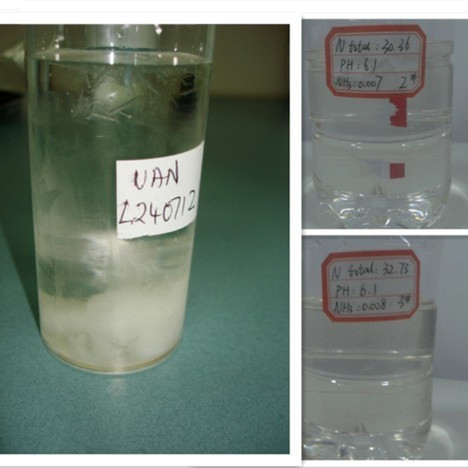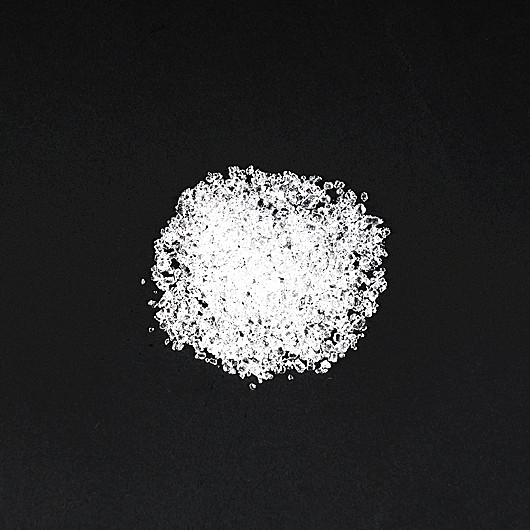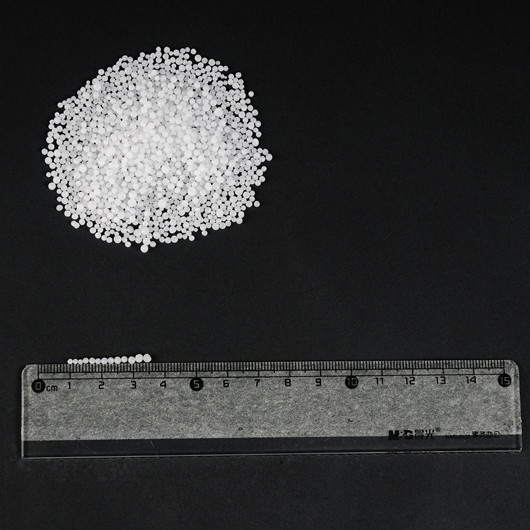Fireworks have been a source of awe, celebration, and artistic expression for centuries. These vibrant displays of light and color are the highlight of numerous festivities around the world, from New Year's Eve celebrations to cultural festivals. Behind the enchanting beauty of fireworks lies a meticulous process of crafting pyrotechnic compositions, and one crucial ingredient in this artistic alchemy is Porous Prilled Ammonium Nitrate (PPAN).
The Role of PPAN in Fireworks
PPAN, a chemical compound with porous prilled granules, plays a vital role in fireworks manufacturing as an oxidizer. Oxidizers are substances that provide the necessary oxygen to facilitate the rapid combustion of the fuel and coloring agents present in fireworks compositions. In the case of PPAN, its porous structure provides an ideal surface area for oxygen release, making it a highly effective oxidizing agent.
Porous Prilled Ammonium Nitrate (PPAN) stands as a pivotal and dynamic component within the intricate art of fireworks manufacturing. Its unique chemical composition, characterized by porous prilled granules, grants it a pivotal role as an essential oxidizer, a fundamental element in the creation of mesmerizing pyrotechnic displays. Let us delve deeper into the profound influence of PPAN in shaping the awe-inspiring spectacle of fireworks.
At the heart of PPAN's significance in fireworks manufacturing lies its remarkable role as an oxidizer. Oxidizers are a class of substances responsible for the release of oxygen, a critical factor in promoting rapid combustion. In the mesmerizing world of pyrotechnics, the harmonious interplay between fuel and oxidizer determines the intensity, duration, and vibrancy of each fireworks effect. PPAN emerges as a star player in this delicate dance, supplying the necessary oxygen to fuel the breathtaking transformation of chemical energy into visual wonder.
PPAN's porous structure bestows it with a distinctive advantage that sets it apart from other oxidizers. Within its intricate lattice of granules, countless micro-spaces provide an ideal terrain for oxygen to linger. As the fireworks composition ignites, these microscopic pockets of oxygen are released, creating a conducive environment for the combustion of both fuel and coloring agents. This controlled and efficient release of oxygen is a cornerstone of PPAN's efficacy as an oxidizing agent, ensuring that the pyrotechnic performance unfolds with precision and splendor.
Colorful Chemistry
One of the most captivating aspects of fireworks is the kaleidoscope of colors they produce. These vibrant hues are achieved through the precise combination of metal salts and other chemicals, which release characteristic colors when ignited. PPAN contributes to this dazzling display by ensuring the controlled and efficient combustion of these color-producing agents.
Porous Prilled Ammonium Nitrate (PPAN) is a vital player in this chromatic tapestry, weaving its influence into the very fabric of the fireworks display. As an efficient oxidizing agent, PPAN ensures the precise and controlled combustion of these color-producing metal salts. When the composition is ignited, PPAN releases a cascade of oxygen, facilitating the energetic reaction between the metal salts and the fuel.
The porous structure of PPAN enhances this process, providing an ample surface area for oxygen release and promoting a uniform and controlled burn. This, in turn, results in the optimal ignition of metal salts, thereby maximizing the brilliance and longevity of the colored light emitted. The collaboration between PPAN and metal salts exemplifies the synergy between chemistry and pyrotechnic artistry, transforming chemical energy into the visual splendor that captivates spectators.
The variety of colors that grace the night sky in a fireworks display is a testament to the meticulous experimentation and refinement of pyrotechnic formulations. Strontium compounds yield mesmerizing reds, while copper salts produce brilliant blues and vibrant greens. Barium contributes to the warmer end of the spectrum with its vivid greens, while sodium imparts a glorious golden glow.
The mastery of achieving desired hues requires an intricate understanding of chemical interactions, temperature control, and precise composition ratios. PPAN, with its role as a reliable oxidizing agent, empowers pyrotechnic artisans to wield control over these reactions, ensuring that the audience is treated to a harmonious symphony of colors that dance and fade across the canvas of the night.
The Pyrotechnic Process
Fireworks are meticulously crafted compositions, where different components are combined to create various visual effects. PPAN is incorporated into these compositions as a key ingredient, alongside other components such as fuels, metal salts, binders, and regulators. The carefully balanced formulation of these components determines the type of firework effect produced, whether it's a brilliant burst of stars, a glittering cascade, or a dazzling explosion of light.
The creation of fireworks is akin to composing a poetic masterpiece, where every ingredient contributes to a harmonious crescendo of visual delight. PPAN, with its porous prilled granules, takes its place among a carefully curated ensemble of components. Each element is chosen with precision, with the ultimate goal of creating a mesmerizing visual narrative that captures the imagination.
In the crafting of fireworks, PPAN collaborates with a cast of characters, each playing a distinct role in shaping the final spectacle. Alongside the oxidizing prowess of PPAN, fuels are introduced to provide the necessary energy for combustion. Metal salts, the maestros of color, imbue the composition with their signature hues, while binders ensure cohesion and stability. Regulators are introduced to fine-tune the burn rate and duration of the pyrotechnic effects.
The Art of Formulation
The secret to a stunning fireworks display lies in the meticulous formulation of these components. Pyrotechnic artisans, with a deep understanding of chemistry and physics, meticulously balance the proportions of each ingredient to achieve the desired effects. PPAN's role as an oxidizing agent is pivotal, as it governs the rate of combustion and ensures that the ensemble of components ignites in harmony.
Proportion example
Here are some examples of possible ratios, but please note that these ratios may vary for different types of pyrotechnic effects. Be sure to follow local laws, regulations and safety standards when using these ratios.
Star flower effect:
PPAN: 65%
Fuel: 15%
Metal salt: 15%
Binder: 5%
Waterfall effect:
PPAN: 60%
Fuel: 20%
Metal salt: 15%
Binder: 5%
Flash effect:
PPAN: 70%
Fuel: 10%
Metal salt: 10%
Binder: 10%
Please note that the above ratios are just some examples, and the actual ratio may vary due to the production of pyrotechnics with different effects. Be sure to do detailed research and experimentation before making fireworks to ensure that all ingredients are safe to use and comply with laws and regulations. In addition, pyrotechnic production requires strict training and professional knowledge, and it is not recommended for individuals without professional guidance and permission to make it. Safety is always the primary consideration.
Safety First
While PPAN is an essential component of fireworks manufacturing, it's important to emphasize that working with fireworks and their ingredients requires strict adherence to safety protocols and regulations. The handling, storage, and transportation of PPAN and other pyrotechnic materials must be conducted with utmost care to prevent accidents and ensure the safety of workers, spectators, and the environment.
Precautions for making pyrotechnics with PPAN
Making pyrotechnics is a highly technical activity involving chemical and safety risks. When using Porous Prilled Ammonium Nitrate (PPAN) and other ingredients in pyrotechnics, the following precautions must be strictly followed to ensure the safety of operators, spectators, and the environment:
Expertise and Training: Pyrotechnic production requires specialized knowledge and skills. Please ensure that only properly trained and experienced professionals are engaged in pyrotechnic activities.
Regulatory Compliance: Before making pyrotechnics, know and obey the regulations and laws in your area, as well as regulations related to the production and use of pyrotechnics.
Safety Equipment: Use appropriate safety equipment such as goggles, gloves, protective clothing, etc. to protect yourself from chemicals and flames.
Operating environment: Operate in a dry, well-ventilated environment, away from flammables, open flames and heat sources.
Accurate weighing: All ingredients must be accurately weighed to ensure the accuracy and stability of the ratio.
Mix evenly: The ingredients must be mixed evenly to avoid unstable reactions.
Avoid excitation: Avoid anything that may cause uncontrolled excitation or friction to prevent unnecessary accidents.
Storage and Transportation: Ensure that all chemicals are handled properly during storage and transportation, following proper safety practices.
Fire-fighting measures: Maintain fire-extinguishing equipment and a fire emergency plan during operation to cover possible fire risks.
Keep away from audiences: When creating and lighting fireworks, keep away from audiences and crowds to prevent accidental injury.
Follow Making Instructions: If using specific making guidelines or recipes, follow those directions exactly and do not make personal creative modifications.
Pay attention to time and venue: Make sure that pyrotechnics are produced at an appropriate time and venue to avoid disturbing community residents and causing environmental pollution.
Children and Pets: Keep children and pets safe from pyrotechnics production areas.
First Aid Preparation: Keep first aid equipment near the area of operation and know basic first aid.
Please note that these precautions are only some basic guidelines, and the actual pyrotechnics production process may involve more details and safety measures. Always do your research and consult a professional before proceeding with pyrotechnics to ensure safe operation and follow applicable regulations.
Innovation and Advancements
In recent years, researchers and pyrotechnic experts have been exploring new formulations and combinations to enhance the visual impact and safety of fireworks displays. This includes efforts to develop environmentally friendly alternatives and reduce the environmental impact of fireworks. PPAN, as a crucial component, continues to be a subject of research and innovation, contributing to the evolution of pyrotechnics.
Conclusion
Porous Prilled Ammonium Nitrate (PPAN) is a cornerstone of fireworks manufacturing, providing the necessary oxidizing properties that bring pyrotechnic compositions to life. As we marvel at the intricate patterns and vibrant colors that light up the night sky, let us also appreciate the scientific and artistic craftsmanship that goes into creating these captivating displays. While fireworks embody the spirit of celebration, it's essential to remember the importance of responsible handling and use of pyrotechnic materials to ensure the safety and enjoyment of all.



